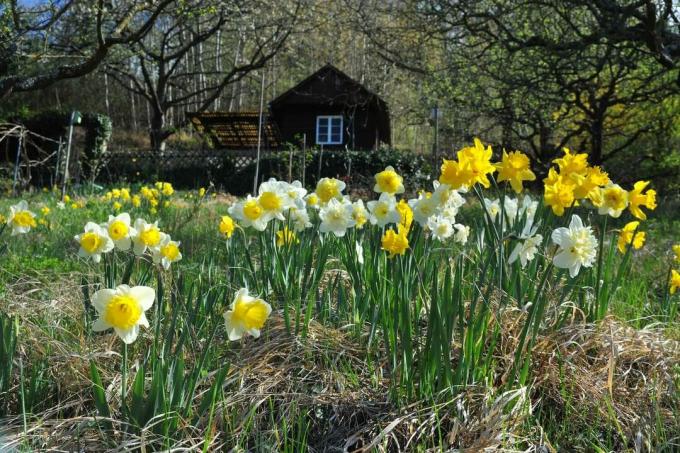Daffodils shine splendidly in the garden in early spring. But many wonder whether the daffodil is poisonous. But is that true?

Daffodils (Narcissus) as well as our onions (Allium cepa), to the plants that develop bulbs as storage organs. With them, thickened bracts act as a reserve for the winter. The daffodil bulbs and the table onions also look very similar. It can happen that the wrong onion rings end up on the Mettbrötchen. But does that make a difference or does this confusion even make it dangerous?
Is the daffodil poisonous?
The answer is: yes, daffodils are poisonous due to chemical compounds that are only found in the amaryllis family (Amaryllidaceae) occur - the so-called Amaryllidaceae alkaloids. Daffodils belong to the amaryllis family. The entire plant, but mainly the bulb, contains these chemical compounds. They serve the natural protection of the plant against parasite infestation and grazing herbivores. They have a cytotoxic effect, i.e. they kill cells.

The sap of the daffodil can cause skin irritation. However, these usually go away on their own. When consuming the onion, you should definitely see a doctor. Nevertheless, some amaryllidaceae alkaloids are used in medicine, for example as an active ingredient in dementia drugs, to inhibit tumor cells or to inhibit the replication of viruses.
Poisonous daffodil: symptoms of poisoning
Typical symptoms of poisoning occur after consuming daffodil bulbs. Smaller amounts can cause gagging, vomiting, diarrhea, drowsiness, sweating and drowsiness. After consuming larger amounts, collapse and symptoms of paralysis and even death follow. Because of this danger, you'd better take the trouble and always label storage containers well.
Note: If you have pets, keep your bulbs inaccessible to them. As little as 15 grams of daffodil bulbs can kill a dog.



